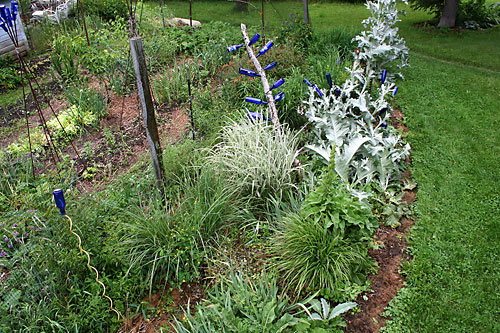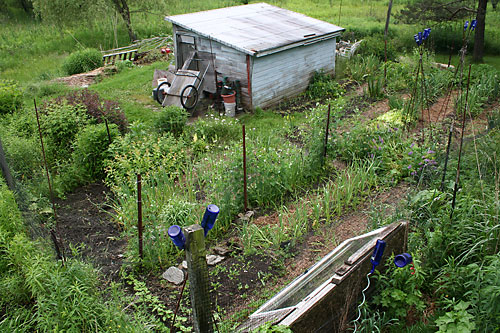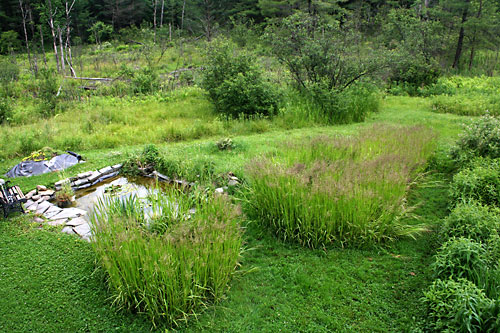You might want to start with Part 1.
July
July started with a rare vacation away from home, to my brother’s lake house to celebrate my Dad’s 80th. On the boat with my sister Cheryl and wife Elly …

With Cheryl and Alex after a good morning of striper fishing.

Back home, it’s midsummer and there are lots of great serendipitous plant combos to enjoy, in the wet garden …
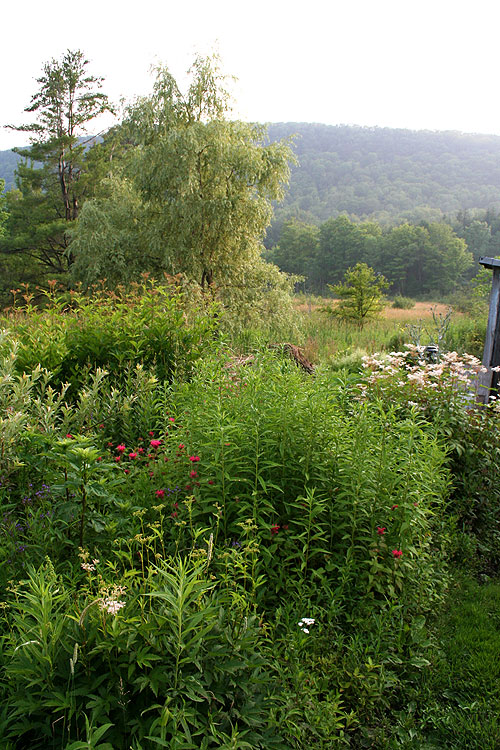
… and front garden.

Enough plant material to do bloom day scans in four different color schemes.
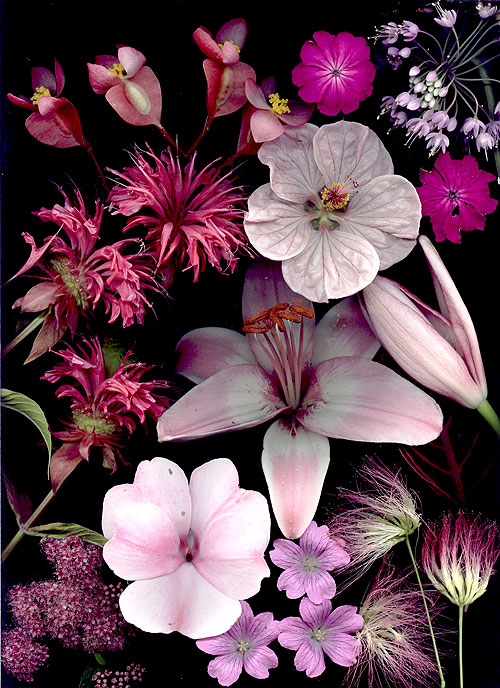
Out in the garden, lilies …

The rusty favorite, Digitalis ferruginea

Exploring backlighting.
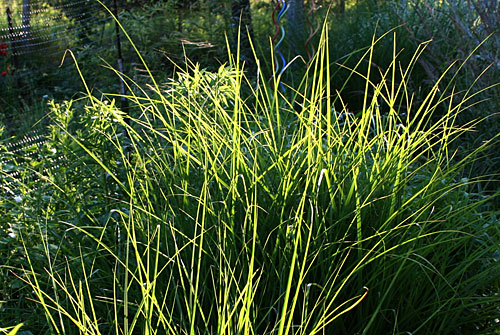
Lots of gaudy flowers to shoot. Hibsicus at Cornell Plantations …

Filipendula.
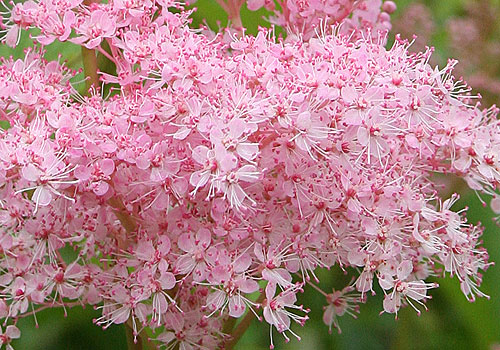
Lily
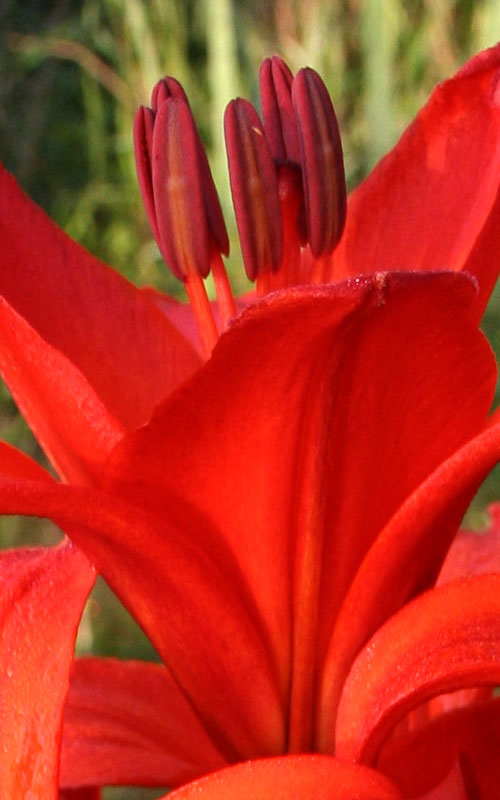
Plus my 15 minutes of fame in USA Weekend.
August
Jade rolling under a double rainbow ’bout sums up my feelings about August.
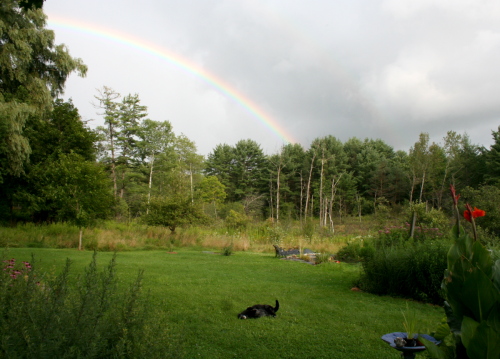
Larger image.
They say things start slowing down in the garden in August. Can’t say I’ve noticed that. There’s lots growing around the patio, but still not much time to sit.

Still plenty of flowers to shoot, including Daylilies, purple …
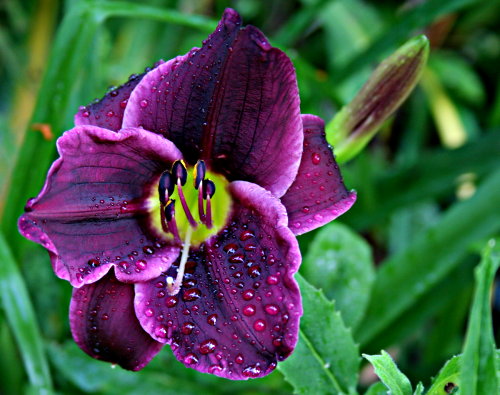
… and yellow …

… Rosa ‘Princess Di’ …

… buttonbush …

…globe thistle …
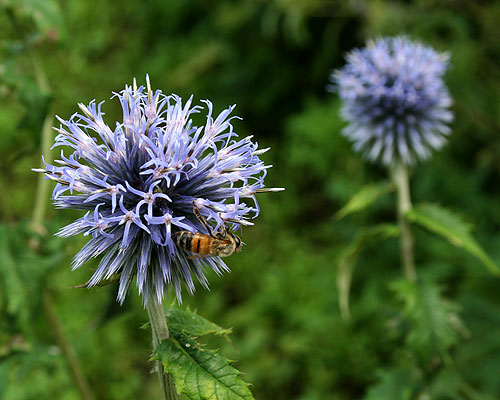
… water lily …

One of the bloom day scans for the month.
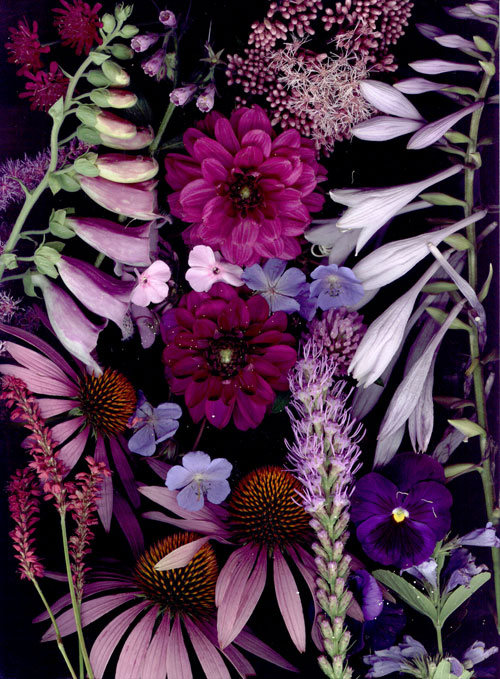
I also defended heucheras.

August has nice sunsets, too.
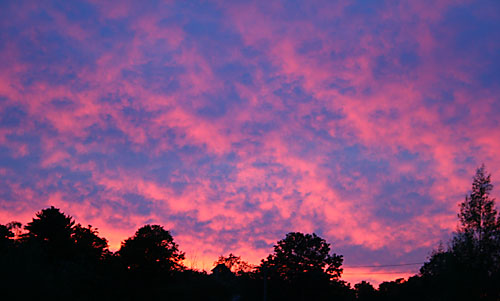
September
OK. The pace does start to slow in September. But it’s still one of the best times of year in these parts, if not the most floriferous.
The colors are more subtle, like this anemone.
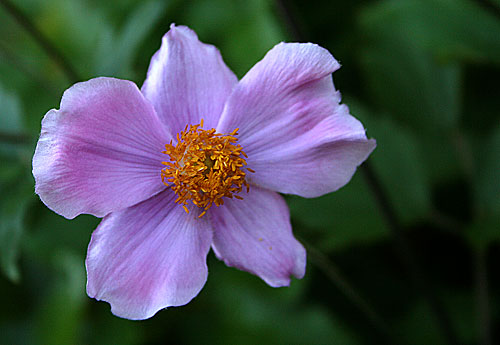
My favorite bloom day scan featured grasses, not blooms.
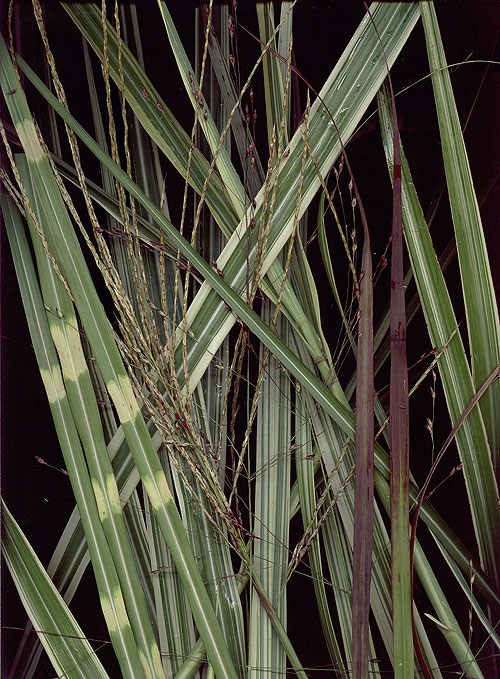
I featured my four (that’s a stretch) water gardens in the month’s Garden Bloggers Design Workshop.
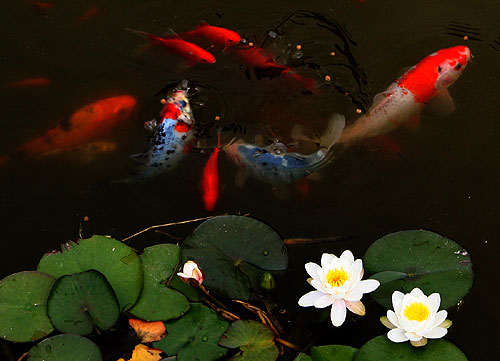
And on a rainy day, I discovered blingee.
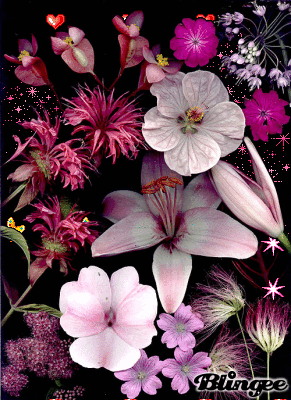
October
October is the month of frost and fall color. But that doesn’t mean there aren’t still some flowers around, like my fall favorites, anemones.
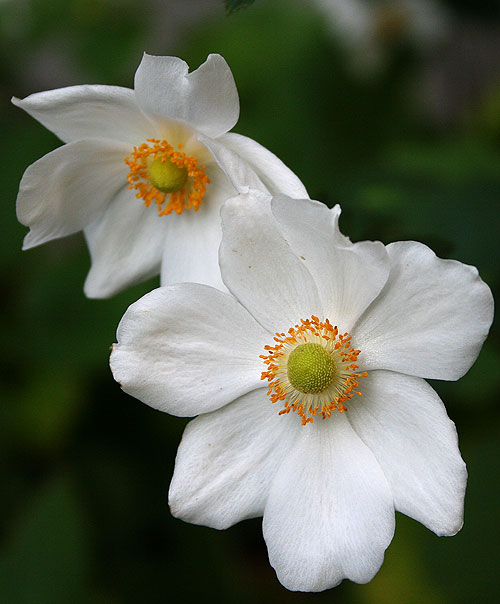
Abutilon pictum ‘Thompsonii’
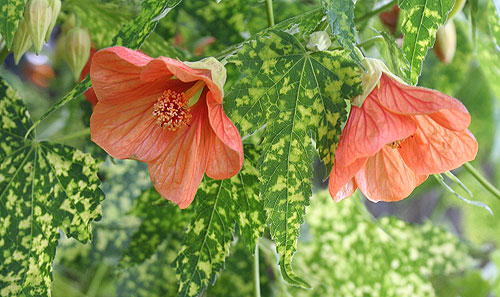
Grasses carry the weight in October.
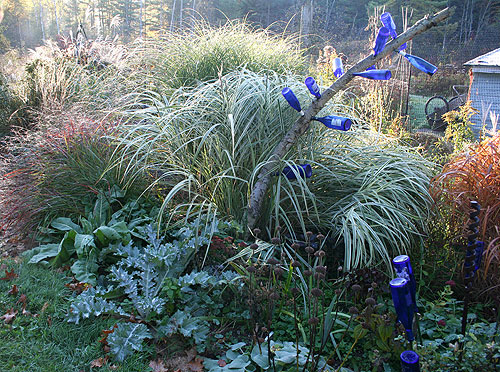
Fall colors start coming with Polygonatum odoratum ‘Variegatum’
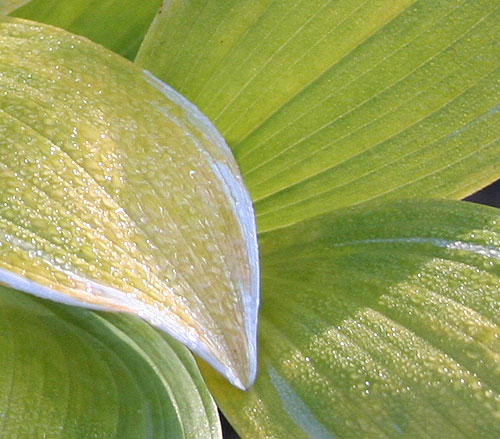
Ivy outside campus store.

First frosts provide great photo opps …
Asian pear in the veggie garden.
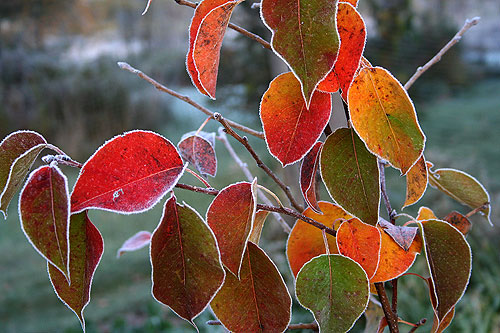
Pitcher plant
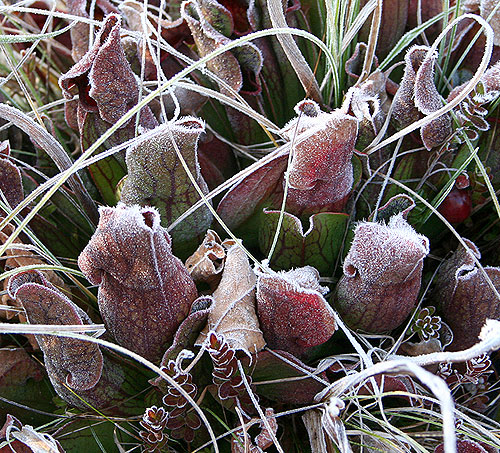
Backlit grasses usher in brown season.

November
Fall color is where you find it, like this pitcher plant …

… and this bittersweet and borrowed scenery.
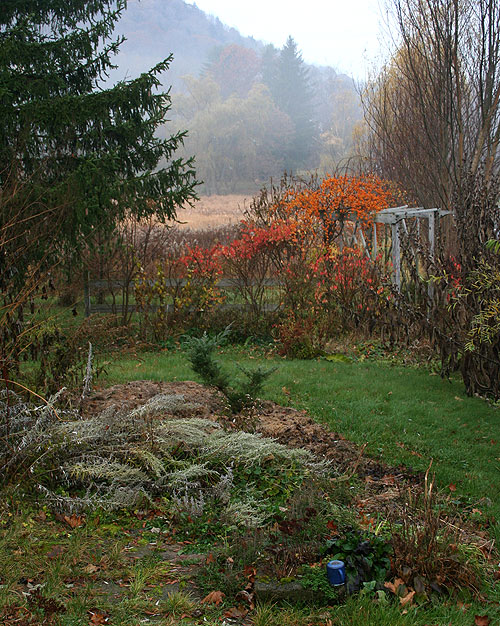
When there’s less to see looking down, you appreciate more the view looking up.
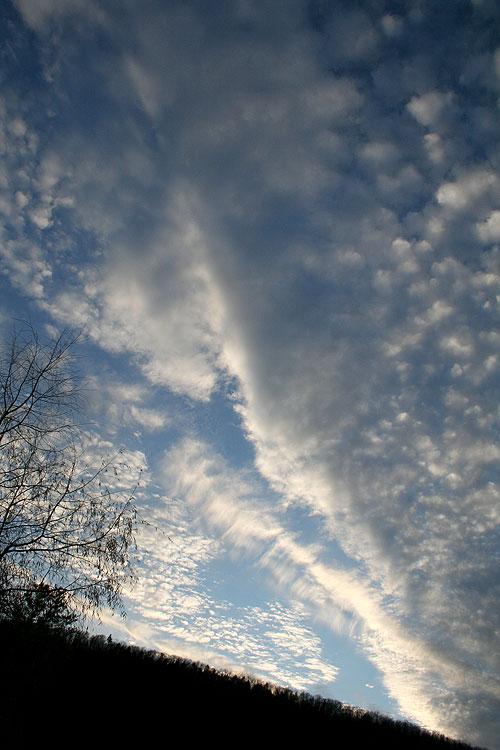
January came in November [impressions | the real thing]

I visited the Winter Garden at Cornell Plantations as the light was waning.

December
Check out the student projects from Cornell’s Art of Horticulture class.
Glowing greenhouses make leaving work after dark a little less depressing during these SAD-inducing months.
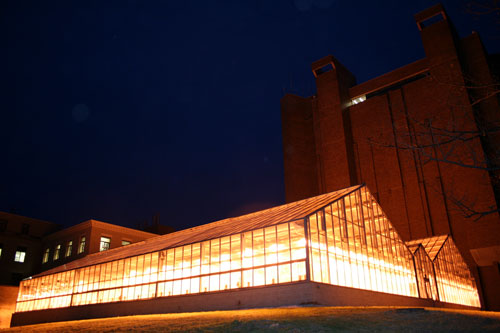
And I’ve now got a passable scan for December for my planned 2010 garden scan calendar.

Thanks for visiting and commenting. Best wishes for the New Year.



